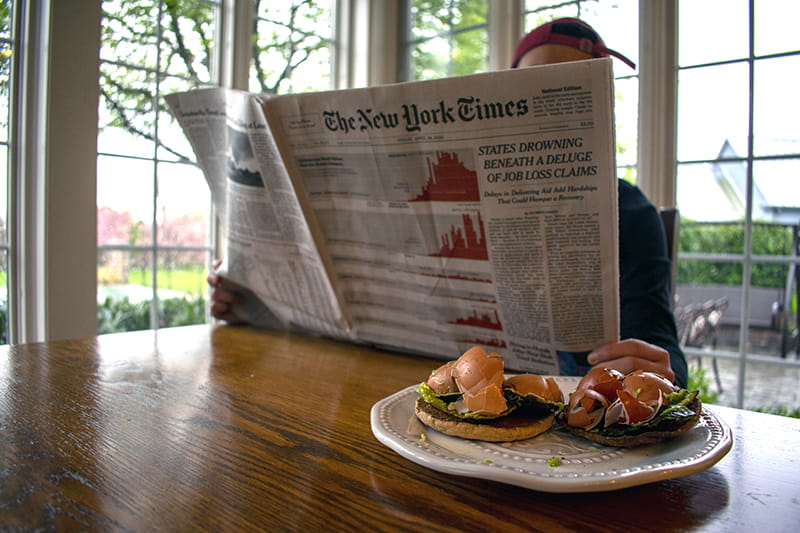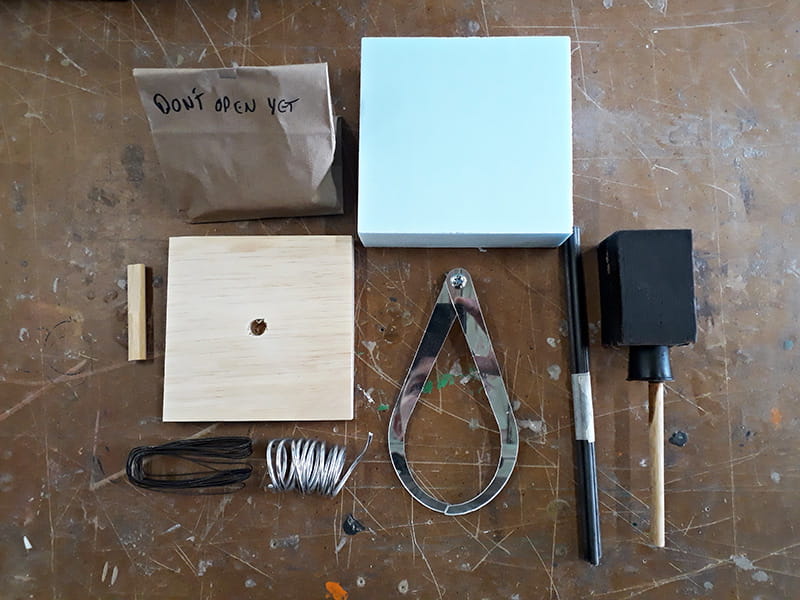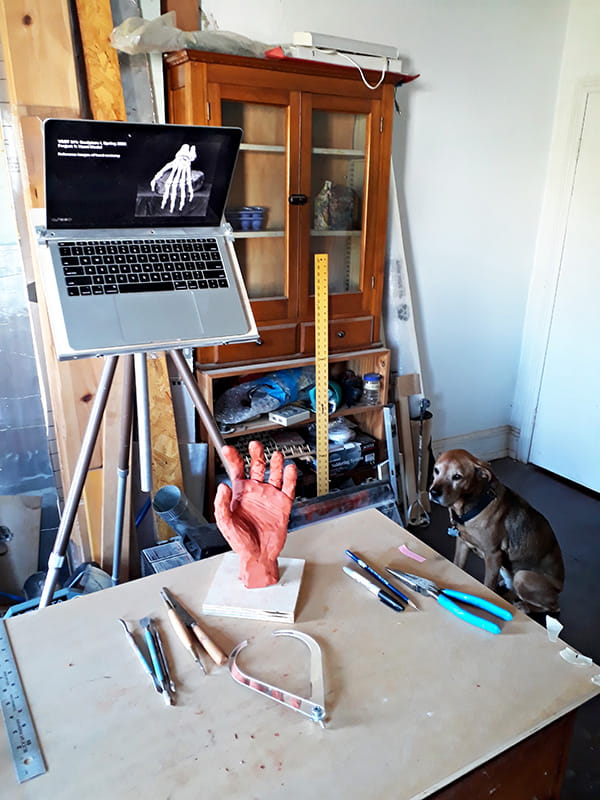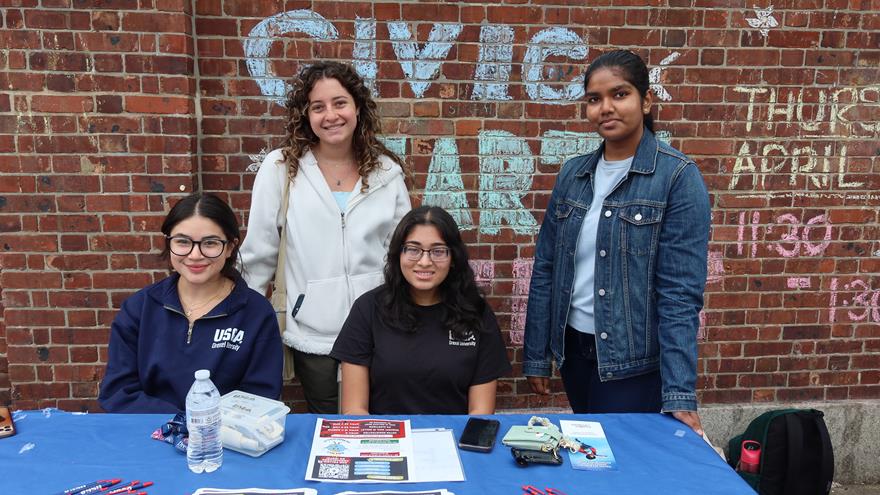Pandemic-Era Sculpture I Class Makes Use of the Mundane

Please visit the ‘Drexel’s Response to Coronavirus’ website for the latest public health advisories.
This piece is part of the DrexelNow series showcasing "A Day in the Class" for some of Drexel University's most interesting and impactful courses.
As the news came down that Drexel University’s campus would be closed for spring term and classes would be taught remotely due to the COVID-19 pandemic, professors across the University began the process of modifying their courses, assignments and lectures to translate over Zoom, rather than in the classroom.
For Lewis Colburn, assistant professor in the Department of Art and Art History in the Westphal College of Media Arts & Design, this process involved running around the sculpture workshops on campus before closure to collect materials to send to his sculpture students. These spring term Sculpture I care packages included blocks of wax, pieces of wood and wire, and finally, one of the mechanical components of a spray paint gun that Colburn had in his studio, cut up and shipped off so students could refer to a complex, unfamiliar object to create a sculptural form.

And this scramble was just the tip of the iceberg for Colburn in terms of figuring out how to teach such a hands-on subject online for the first time.
“The thing that worked in my favor is that sculpture can be so many things, and it can be so broad and open-ended, that I could kind of pick and choose processes and assignments that would work remotely,” he said.
Later, in week six of spring term and about halfway through one of Colburn’s biweekly, three-hour VSST 311 “Sculpture I” virtual class periods, the students review and critique each other’s work in recreating those little pieces of the paint gun — and finally find out what, in fact, they are, after asking and Colburn bringing a Googled photo up on screenshare for the big reveal.

Though molding such a mundane form from wax from the comfort of their bedroom may not have been how they thought taking this Sculpture I class would go, the students are thankful to Colburn for giving them the opportunity to work with their hands at all while taking a virtual course.
“It just showed that it was going to be OK — that he actually cared about making sure that we had what we needed in order to succeed in the class,” said Izzy Volpe, a second-year fashion design major, of Colburn sending them to package of free materials. “We were never in the dark. I think that was probably the best way for him to go about it, and in the end it really did work in our benefit.”

Other projects the sculpture students participated in this term included modeling a hand in oil clay (which was also a part of the course pre-pandemic) and creating one-minute sculptures, which were photographs of themselves in absurd configurations related to their environment or other objects. It’s been quite different from how Colburn has taught the course over the last six years — a course that he designed as a “sampler” to introduce students to working with a variety of different materials and processes, from metalwork to digital fabrication.
“So, it covers a lot of ground, which was one of the central challenges,” Colburn said of translating the class for remote learning. “I would say right now [the class is] a fairly successful and fun Band-aid, but it’s not the same thing I would typically be delivering in the classroom.”
But there are some things about Colburn’s class that even a pandemic can’t change, like the ways he engages with students. At several points during his hours-long interactive class, his hands were excitedly flailing around the screen, twirling around his own temples as he asks students to think about something, or reaching out toward the camera while agreeing with a point they’ve made.
All of this excitement is exuded on top of the hours of preparation necessary for Colburn to plan each class virtual period, as compared to the in-person component that, before the pandemic, he could practically deliver on autopilot.
“[I keep thinking I’m] going to want to just be reaching through the screen and trying to show these students what to actually do, but the video conference mode has worked better than I thought,” Colburn said. “… It’s exhausting, but it’s a different kind of exhausting.”
“I’ve been fortunate that they’re a great group of students, they do the work that I ask them to do, and I’m humbled and honored that they’re willing to come along on this crazy adventure that’s very much not the same thing that we’d be doing if we were in the classroom,” he continued.
For the students, who come from several different Westphal majors but have previously taken the design foundation sequence, they’re just as quick to explain the things they gained from the remote version of the class as they are to cite what was lost.
Volpe said she took the class to continue creating things by hand and having tactile interactions with different materials this term, as all of her other classes were computer-based. So, she was excited to do some woodworking, molds and casts before realizing the pandemic would make these opportunities impossible.
“But at the same time, he’s still giving very good lectures and still driving that passion for sculpture into the class,” she said. “We’re still in that mindset of we’re making sculptures, but it gives us a lot of room for conceptualization, which is really important.”

Camile Holzbauer, a third-year product design major, wanted to make large-scale works like her friends have while taking the class during previous terms, but still thinks Colburn did a great job of integrating physical projects into the virtual class.
“I’ve heard a lot of great things about Lewis as a teacher and the class as a whole,” she said. “You show up to the class and whatever you show up with, he always finds something good and positive, and has great feedback for you. I feel like that’s something really nice to have in the design world where you tend to get a lot of harsh criticisms on things.”
Volpe added that Colburn went above and beyond in terms of making sure the translation of his class to Zoom was still up-to-par, and that his dedication and passion for teaching still came through virtually.
“It really shows how much he cares about the class and his job,” Volpe said. “He’s actually passionate about teaching us these fundamentals of sculpture because he wants to see us succeed as artists, which is in itself kind of inspirational to make you want to do better for yourself.”
And though they may not have gotten to put the finishing touches on a 3-D modeled and printed work or wrestle with and come to understand the behavior of a variety of different materials, the students in this section of Sculpture I, along with their professor, are content with working with what they have on-hand.
“I feel lucky that I find teaching this course a lot of fun in almost any context,” Colburn said. “I had a lot of work and anxiety about how it was going to go, but after the first few class sessions, people seem to be sort of on board and I got a little bit more in rhythm with it.”
Drexel News is produced by
University Marketing and Communications.
